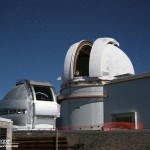Another proposed bill that has been carried over from the 2017 legislative session is HB1565. The purpose of this bill is to create a conservation district sub-zone category specifically geared to supporting research and technology facilities. The astronomy precinct atop Mauna Kea is identified as such a sub-zone along with seven other sites such as NELHA and the facilities atop Haleakalā.

The legislature further finds that research activity brings in millions of dollars that help diversify and stabilize the State’s economy that is heavily dependent on tourism, which is a cyclical industry. A study of research expenditures in the University of Hawaii system alone, not including private or non-university funded federal projects, showed that research activity had an economic impact on business sales of $760,000,000, state taxes of $45,000,000, employee earnings of $275,000,000, and the generation of about seven thousand jobs. – Excerpt from HB1565 proposed legislation for the 2018 Hawaii legislature
The bill would designate specific lands to be used for science and technology facilities. More interestingly the bill specifies a set of rules by which these lands are to be administered and subleases are to be negotiated.
The bill simplifies and streamlines the land use decision process. In the case of opposition to development within a science and technology sub-zone the method of dispute is designated as mediation rather than a contested case hearing.
This bill is certain to be a lightning rod for opponents of astronomy on Mauna Kea and Hakeakula. The opposition will be vehement to say the least. Indeed, it will be interesting to read the opposition commentary.

But there remains a question… Does the process specified in this particular bill to manage this new type of sub-zone excessively curtail public participation in the land management process? Where is the balance between sensible development and protection of the environment?
We currently have a situation in which a small and vocal minority can completely derail the process, that even reasonable development is blocked. A situation where only extraordinarily well funded organizations can accomplish anything. Then only with a stunning amount of wasted resources and effort along the way.



